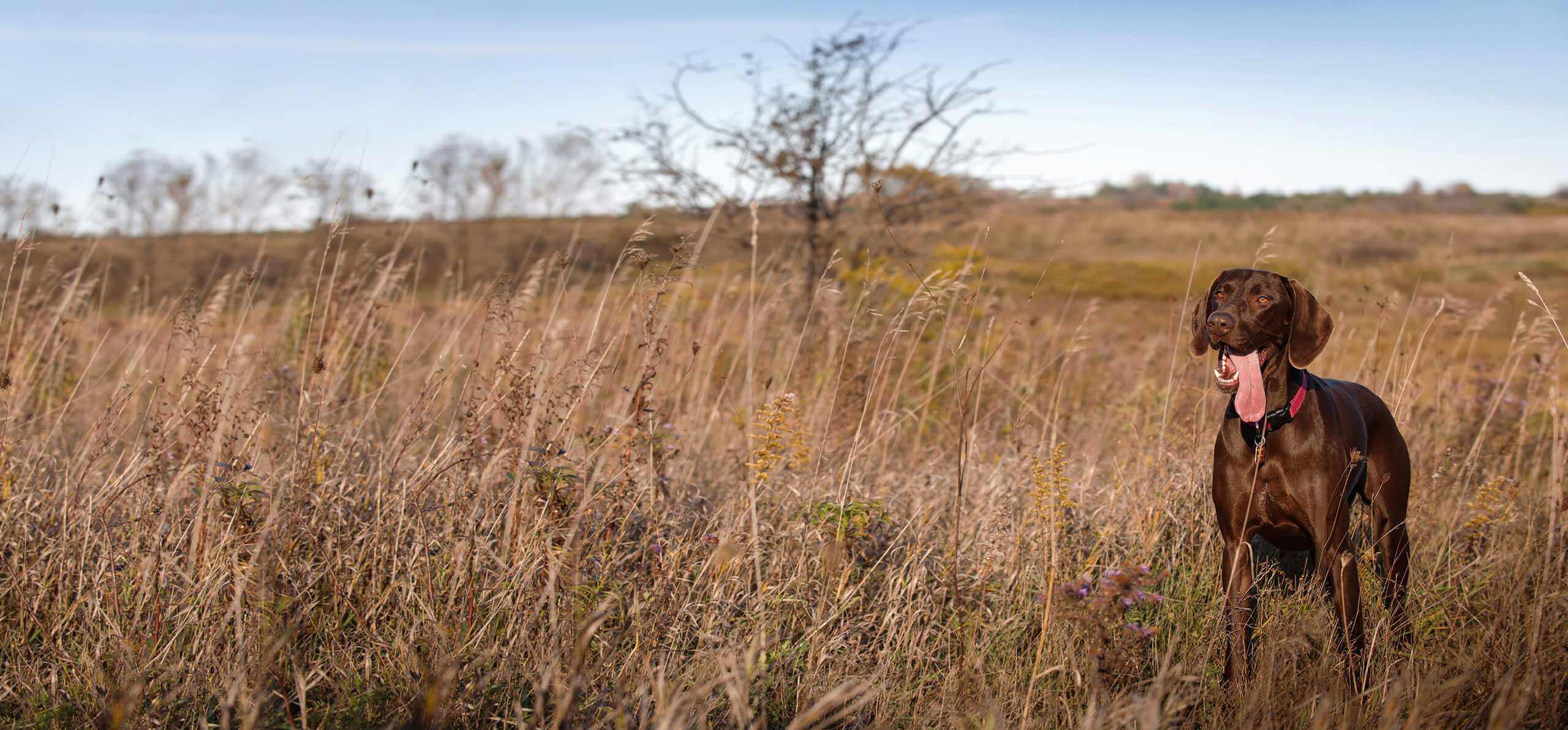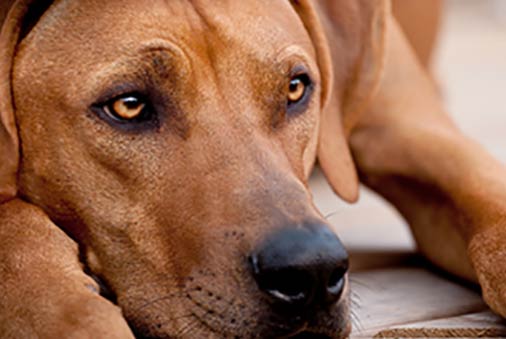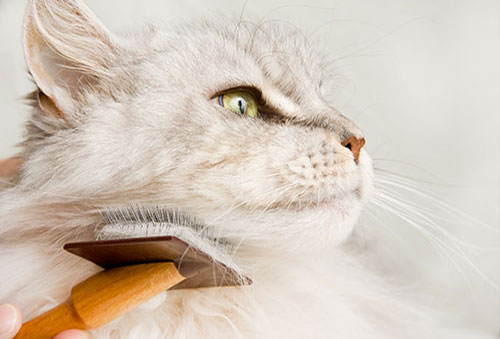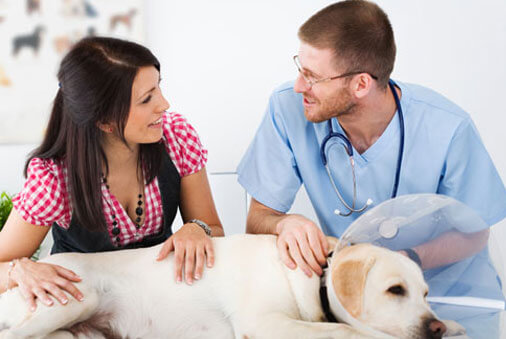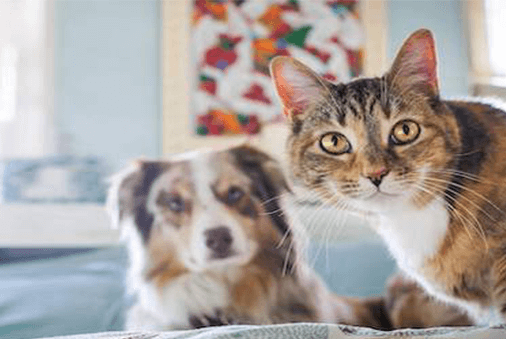Adult Dogs: 1 to 7 Years Old
Feeding Your Adult Dog
Adult dogs need sufficient nutrition to meet their energy needs and support good health. Normally, adult dogs get two meals a day: one in the morning, one in the evening. But the quantity you feed your dog should be based on his size and energy output related to his activity level.
Overfeeding can lead to obesity and numerous health issues, so shower your dog with love and affection not extra food and treats.
If your dog’s nickname is “Super Canine,” he’s probably more active than other pooches and would require more energy from his diet than normal maintenance levels. Dogs who spend more of their time on a couch or your lap, will require less daily energy intake.
Dogs who serve as guide dogs or working dogs like sheep and cattle herders or police dogs, need more daily energy intake depending upon the amount of physical work or stress involved. Dogs recovering from surgeries or illnesses may also have increased nutritional needs to help them recover faster.
Temperature changes can also affect your dog’s food intake; extreme heat or cold will place more energy demands on your dog as they acclimate.
When buying a quality dog food, always compare ingredients. Some recipes require more calories to achieve the same nutritional benefits as higher quality pet foods that can give you more nutritional value with smaller quantities.
Ask your veterinarian to recommend the type and amount of high-quality food you should be feeding your adult dog.
Good dog! Not?
Just like humans, dogs often show behavioral changes as they grow up and test their boundaries. Chewing is a prime doggie trait, honed when they were pups.
However, if your adult dog is still chewing and biting inappropriate things (like humans) you need to retrain them, especially since adult jaws can do a lot more damage than tiny puppy teeth.
This mouthing behavior is more difficult to curb in adult dogs because they aren’t as sensitive to human reactions as puppies are; plus, the bigger the dog, the more difficulty restraining them.
Adult dogs who use people as chew toys most likely never learned how to be gentle when mouthing humans during puppyhood. Playful nipping is extremely normal and common, but chronic, painful biting can indicate aggression.
Watch your dog’s body to determine if he’s playfully mouthing or ready to pounce. Playful dogs have relaxed bodies and even if their muzzles look wrinkled, you won’t see tension in their faces. Dogs about to strike look stiff, with tightly wrinkled snouts and lips pulled back to expose their teeth.
Dogs usually learn to inhibit biting when they’re young and wrestle with other canines. When they hear a yelp they know they’ve gone too far and the play will stop. They quickly learn if they’re not gentle with each other the fun will stop.
If your adult canine didn’t learn to control his playful bites when he was a pup, you can teach him now. Emit a high-pitched yelp if he nips you too hard and immediately let your hand go limp.
Abrupt changes like this will startle your dog and temporarily stop his behavior. Praise and reward him for stopping or licking you, before you start playing again. If he nips at you again, repeat the training: Yelp loudly, remove your limp hand from play and/or ignore him for a minute or so before trying again.
If your dog is particularly stubborn and keeps biting too hard, try leaving the room for a time-out. Return and resume playing until your dog realizes that rough play means the fun will stop.
Tips for “mouthing” off
- Substitute chew toys and bones for fingers or toes.
- Nips when he’s petted? Distract your dog with treats in your other hand so he associates touching with a reward, not biting.
- Substitute fetch or tug-of-war games that don’t require direct contact with your hands or feet.
- Reinforce impulse control by reviewing “ sit, stay and wait-for-it” commands.
- Avoid waving your hands to encourage play or abrupt movements when your dog mouths. Jerking hands and feet may provoke him to roughhouse with more aggressive
behavior. Let your hands or feet go limp, instead. - Never stop playing with your dog. If he has trouble learning to play gently consult your
veterinarian and consider professional classes from a certified trainer.
Daily play dates
Play isn’t just for puppies. Encouraging socialization skills with other dogs, and human interactions that strengthen the bond between your best pal and your family, help stimulate your dog physically and mentally.
Healthy, adult dogs should get a minimum of 30-60 minutes of physical exercise daily but check with your veterinarian before beginning any exercise regimen for your dog. Large breed dogs are predisposed to ligament injuries, arthritis and hip dysplasia so prolonged movement like jogging is not recommended for them.
Some smaller breeds that have respiratory issues due to a flattened facial structure (Pugs, Bulldogs, Frenchies, and more) can have trouble breathing during extensive exercise, so be careful not to overdue their physical activity — especially in warmer weather.
Remember, mental stimulation is as important as physical: Add adult canine toys and chews to your dog’s favorite puppy ones (if any have survived) to encourage solitary and group play. Bigger rope toys and flying discs can keep your adult-sized dog moving throughout the day.
Toys that have a hidden treat are especially helpful for exercising your dog’s mind and keeping him alert. Have your dog hunt for his dinner, learn new training commands and tricks, and have plenty of chew toys on hand to keep him busy when he’s in couch potato mode or left alone.
You can also use activity and play as a reward for a job well done, instead of relying on edible treats all the time. Your dog is more likely to learn new commands if he knows there’s a fun reward (a walk, a run, a game of hide ‘n’ seek) waiting for him after he achieves the goal.
Adult Hygiene and Grooming
Remember to keep up with your dog’s dental care, especially if this lapsed during his puppy years. Be sure his teeth and gums are professionally scraped and cleaned if plaque has built up, and get on top of home cleanings, too.
It’s common for adult dogs to have Gingivitis by the time they’re two, especially if preventive measures weren’t taken when they were a pup, so notify your vet if your pooch has chronic bad breath and sensitive or bleeding gums.
During warm weather, always carefully inspect your dog’s coat for fleas and ticks. Routinely brushing his fur will cut down on the number of baths he’ll need each year. If you bathe your pooch at home, carefully comb or cut out any matted hair or fur before you wash him. Be sure to rinse him well because soap residue is a dirt magnet.
Enrichment tips
Nurturing is important at every stage of your dog’s life. If your work and home life are hectic and you can’t be with your best pal as much as you’d like, consider ways to add something new to his weekly routine:
- Dogs love other dogs even more than they love humans (most of the time). Consider taking your pooch to doggie daycare so he can run and play with a variety of older and younger canines.
- If your work place doesn’t have an “open-dog” policy that allows dogs to be co-workers, try spending lunchtime with your furry family member.
- Hire a reputable dog walker to exercise your dog during the day when you’re not home. If you have friends or family members who are free, ask if they’d like to visit your dog some afternoons.
As long as your adult dog doesn’t have any physical limitations and illnesses, his day-to-day life should be one of routine simplicity enhanced with lots of love from you and other humans.
Continue to feed him a high-quality adult food, exercise, train and play with him regularly, keep your veterinarian notified of any changes in his physical or mental condition, reward him with your affection and you’ll most likely continue to enjoy a long and happy adventure together.
Is your dog 8 years or older? Learn about the next important stage in his life.

